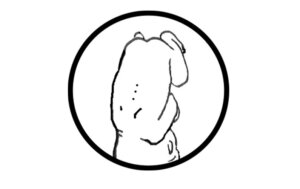 In Right Occiput Anterior (ROA), the back of the baby is more on the mother’s right side than on her left side. In other words, The back is to the mother’s right, and the baby is facing towards the roomy sciatic notch in the back left of her pelvis. She doesn’t feel any flutters of fingers low in front — it’s all quiet between her navel and her pubic bone. Kicks are only in the upper left and a bulge rises in the upper right occasionally. The heartbeat is easy to hear in front on the right.
In Right Occiput Anterior (ROA), the back of the baby is more on the mother’s right side than on her left side. In other words, The back is to the mother’s right, and the baby is facing towards the roomy sciatic notch in the back left of her pelvis. She doesn’t feel any flutters of fingers low in front — it’s all quiet between her navel and her pubic bone. Kicks are only in the upper left and a bulge rises in the upper right occasionally. The heartbeat is easy to hear in front on the right.
The ROA baby is not on the Spinning Babies® list of clearly ideal or optimal fetal positions. The ROA position is not clearly associated with a resulting labor pattern. The baby may rotate to the posterior and, if so, labor may have a posterior pattern of cluster contractions with slow downs or stalls. The baby may rotate to the anterior and labor may be straight-forward. The main determinant may be whether or not the chin is tucked.
Variables with the ROA baby that affect labor:
Use the 3 Principles to give the ROA baby a chance to turn and face the back, right side and have their back on mother’s left.
Notice if there are small wiggling parts near the front, lower half of the womb. Hands in front indicate a posterior baby. The LOP baby is often labeled ROA because the forehead of the LOP baby feels the same width as the nape of the ROA baby’s neck.
For additional education to even further enhance your pregnancy and labor preparation, shop our extensive collection of digital downloads, videos, DVDs, workbooks, and more.